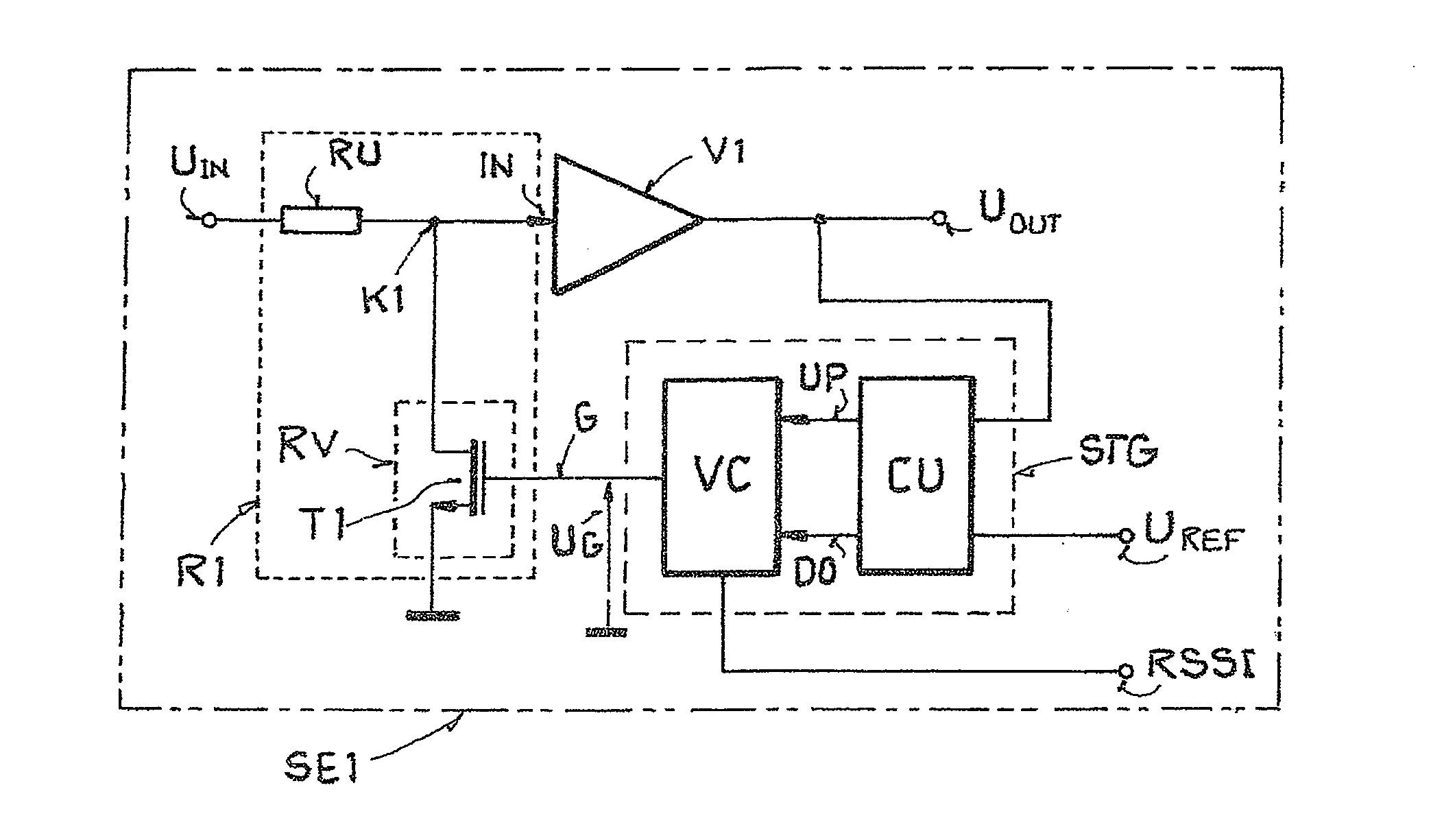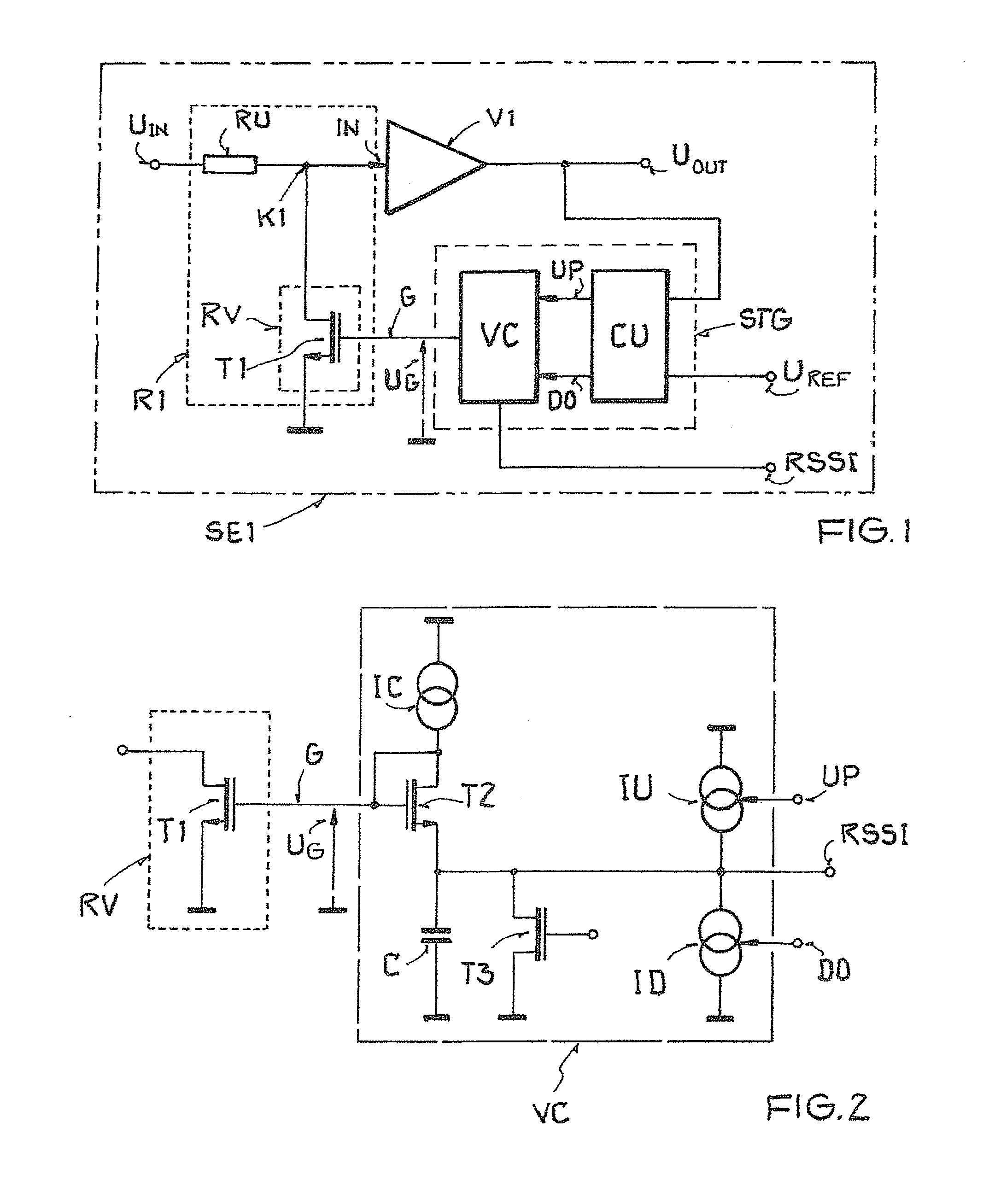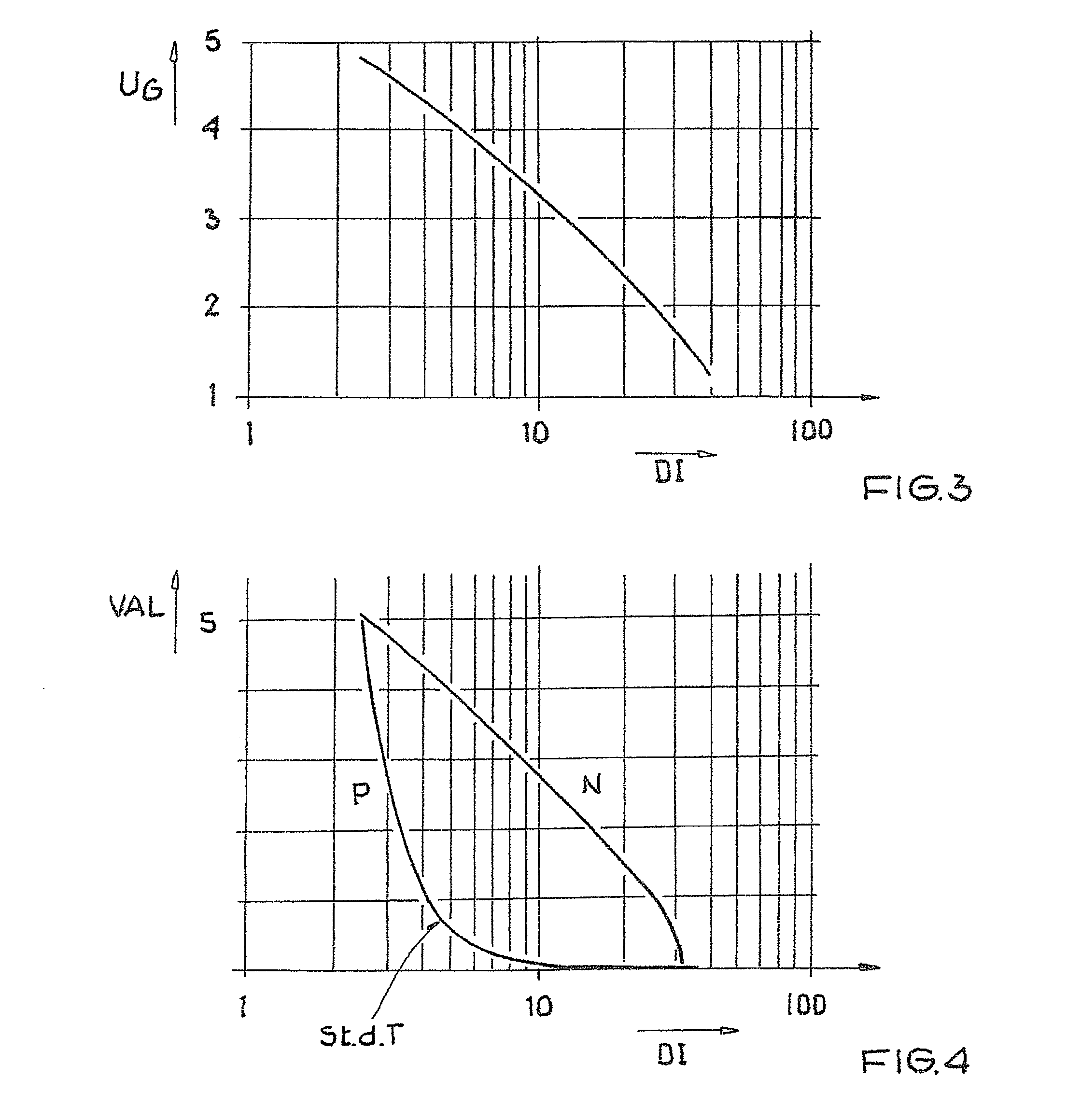[0007]It is therefore an object of the present invention to provide a method by means of which the field strength of an input
signal can be determined advantageously. A further object of the present invention is to provide a circuit arrangement for carrying out the method.
[0010]An
advantage of the method or the circuit arrangement is that the field strength of the particularly received
electromagnetic signal can be determined without further calculations in a simple manner from a comparison of the applied gate voltage of a MOS
transistor and stored field strength values, already assigned beforehand to the gate voltage. As a result, the method can be used for determining the spatial distance between the receiver unit and a transmitting unit, in that the field strength values, assigned in the value table to the respective gate voltage, are linked to a distance value. In this regard, a distance range within which
data transmission is permitted can be established with the values from the value table. Further, the
data rate can be increased with a decline in the distance. Further, because of the low
power consumption, the method is especially suitable for obtaining field strength information in the case of transponders. The method of the invention is based, inter alia, on the fact that the field strength is linked to the distance between a receiving
station and a transmitting
station by a nonlinear
functional relation and the nonlinear relation is inversely proportional in part to the nonlinear relation of a change in the forward resistance of a MOS transistor, operating within the nonlinear range, preferably in the “subthreshold” range. As a result, both nonlinear dependences are compensated in part, so that the gate voltage is increased or reduced linearly with rising values or declining values of the received field strength or the distance, until the output voltage of the
operational amplifier lies within a predefined interval around the reference voltage. Tests by the applicant have shown that the level of the gate voltage in a first approximation is proportional to the logarithm of the distance. Because the amplification of the operational
amplifier remains constant, the output voltage of the operational
amplifier has a
fixed ratio to the input voltage. As a result, the amplification is not increased either at low or at
high input voltages and the ratio of the signal voltage to the
noise voltage remains low over the entire amplification range. Another important
advantage is that, because of the linear dependence of the values of the gate voltage to the distance, there is a uniform spatial resolution by means of the method of the invention both at small distances to the transmitting
station and at great distances to the transmitting station.
[0011]Further, particularly with varying signal levels, a rapid turn-on and turn-off transient behavior at the output of the operational
amplifier is achieved, because the output voltage and the input voltage of the operational amplifier fluctuate only to a minor extent and the capacitances present at the input or output of the operational amplifier are not recharged and the
power consumption is reduced. In particular, in the case of pulse-pause modulated signals, the field gaps can be reduced by the short turn-on and turn-off transient behavior and the
data rate increased. Another
advantage of the fixed
amplification factor is that in the case of the operational amplifier, the amplification can be adjusted precisely with a low
current consumption by means of a high-impedance
negative feedback. Another advantage of the method is that the nonlinear change in the resistance value of an individual resistance, which is preferably formed as an individual MOS transistor, is sufficient for regulating the input voltage present at the operational amplifier. In contrast, a particular advantage of the MOS transistor in comparison with a bipolar transistor is that the gate of the MOS transistor can be controlled virtually without loss and at low received field strengths a circuit formed in such a way requires little power to determine the received field strength. Specifically in circuits operating passively, i.e., those that draw the needed power exclusively from the
electromagnetic field of a transmitting station, this is an important advantage in order to increase the communication range between [sic] a receiver operating according to the method of the invention.
[0012]Further, it is advantageous to supply the input voltage to the operational amplifier from a divider node of an
input resistance realized as a
voltage divider and hereby to change only the single resistance of the
voltage divider part connected to a reference potential.
[0014]In another embodiment, to adjust the
operating point or the gate voltage of the MOS transistor, the storage element can be supplied with current from a
constant current source. The voltage level of the
capacitor and thereby the
operating point of the MOS transistor can be adjusted by the
constant current source, without currents from the controllable
current source or sink being required. In another preferred refinement, the storage element can be discharged by a switching means, preferably realized as a MOS transistor, to be able to adjust rapidly specifically defined voltage conditions or great fluctuations in the received field strength.
 Login to View More
Login to View More  Login to View More
Login to View More 


